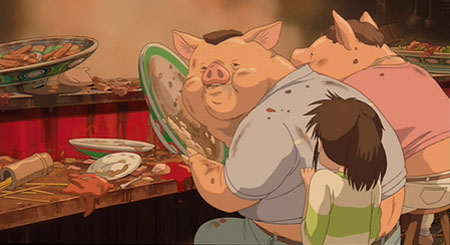
DIRECTED BY: Luis Buñuel
FEATURING: Fernando Rey, Paul Frankeur, Delphine Seyrig, Bulle Ogier, Stéphane Audran, Jean-Pierre Cassel, Julien Bertheau
PLOT: Two well-to-do couples arrive at the home of a third for dinner, but find there has been a misunderstanding on the date, and their hostess has not prepared a meal. The sextet tries to reschedule dinner over and over, but meets with increasingly absurd obstacles: dead restaurateurs, a platoon of soldiers who intrude on the evening, police officers who burst in and arrest the entire party before the first course. Complicating the scenario further is a bishop who imposes himself on their party, flashback ghost stories told by minor characters, a subplot about an ambassador smuggling cocaine and being hunted by a female terrorist assassin, and scenes that turn out to be dreams.

BACKGROUND:
- Buñuel had announced that he would retire after Tristana (1971), but was inspired to make this movie by a story his producer Serge Silberman told him about having dinner guests show up unexpectedly due to a calendar mix-up.
- Co-written by Surrealist screenwriting specialist Jean-Claude Carrière, who became Buñuel’s most significant collaborator (surpassing even Salvador Dali). He assisted with writing duties on the director’s great 1967-1977 French renaissance period.
- Among other honors, Discreet Charm won the Academy Award for Best Foreign Language Film (an indifferent Buñuel did not bother to show up to accept the award) and is included in Steven Schneider’s “1001 Movies You Must See Before You Die
.”
- Stephen Sondheim has a musical based on both The Exterminating Angel and Discreet Charm of the Bourgeoisie in the works.
INDELIBLE IMAGE: Shots of the six bourgeois friends, walking down an isolated country road, inserted at random between scenes. Their stride is purposeful, their destination… nowhere.
THREE WEIRD THINGS: Dinner theater; bishop with a shotgun; electrified piano cockroach torture
WHAT MAKES IT WEIRD: Buñuel’s exercise in bourgeois frustration begins simply, with a canceled dinner appointment, but quickly spirals out of control with a cocaine smuggling subplot, a foxy female terrorist, a vengeful bishop, and dreams inside of dreams. They never do get to that dinner party, although Fernando Rey does get to sneak in a slice of lamb and a midnight snack.
Original trailer for The Discreet Charm of the Bourgeoisie
COMMENTS: Luis Buñuel is cinema’s poet of frustration, of eternal Continue reading 273. THE DISCREET CHARM OF THE BOURGEOISIE (1972)





 Although the relationship between Zampano and Gelsomina is abusive, somehow it works, according to the divine plan, until the serpent enters Eden. Being Fellini, the symbolism is not as Biblically simpleminded as that, and we are introduced to The Fool through pagan entertainment fused with the symbolism of religious fiesta. He appears elevated, adorned in cherub wings, but angels fall in myths, and on the ground the Fool proves to be no angel. Although his concern for Gelsomina initially seems to be genuine, he is apt to manipulate her. The Fool’s relationship with Zampano is more clearly combative. He mercilessly taunts the strongman and Fellini injects a hint of a previous, cruel ménage a trois with Rosa (a substitute for Lilith, the apocryphal first wife of Adam).
Although the relationship between Zampano and Gelsomina is abusive, somehow it works, according to the divine plan, until the serpent enters Eden. Being Fellini, the symbolism is not as Biblically simpleminded as that, and we are introduced to The Fool through pagan entertainment fused with the symbolism of religious fiesta. He appears elevated, adorned in cherub wings, but angels fall in myths, and on the ground the Fool proves to be no angel. Although his concern for Gelsomina initially seems to be genuine, he is apt to manipulate her. The Fool’s relationship with Zampano is more clearly combative. He mercilessly taunts the strongman and Fellini injects a hint of a previous, cruel ménage a trois with Rosa (a substitute for Lilith, the apocryphal first wife of Adam).